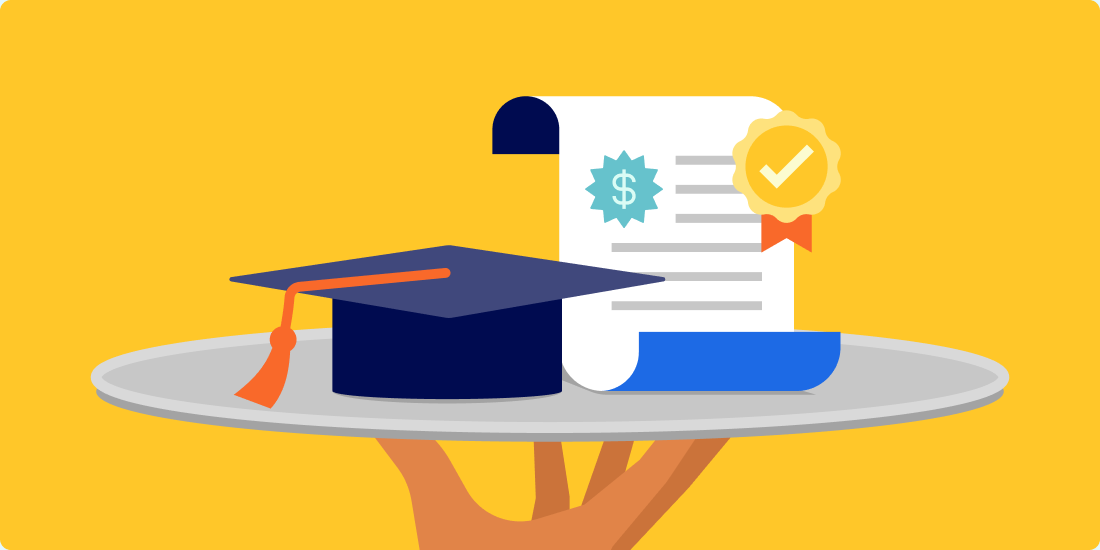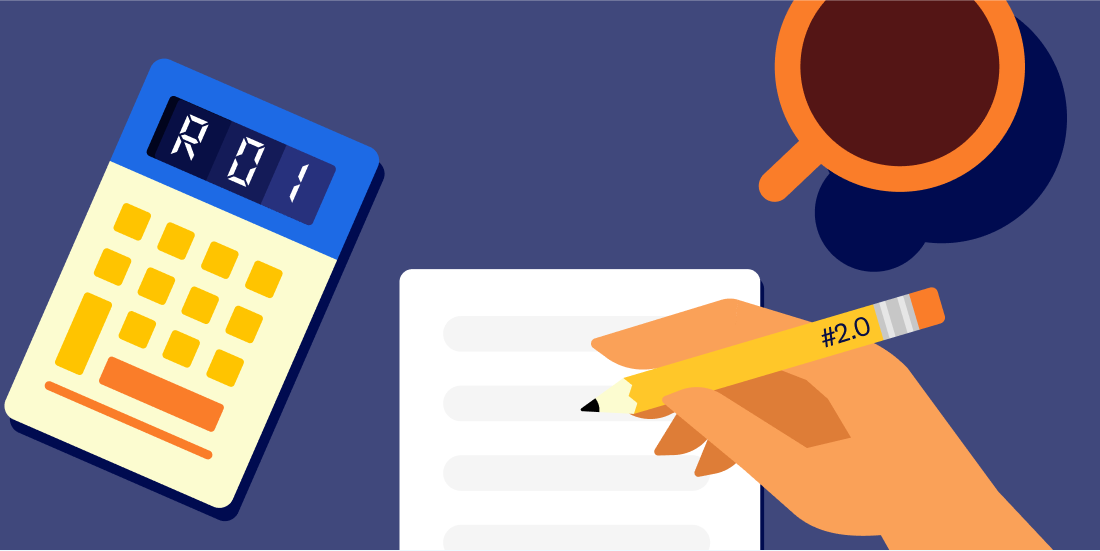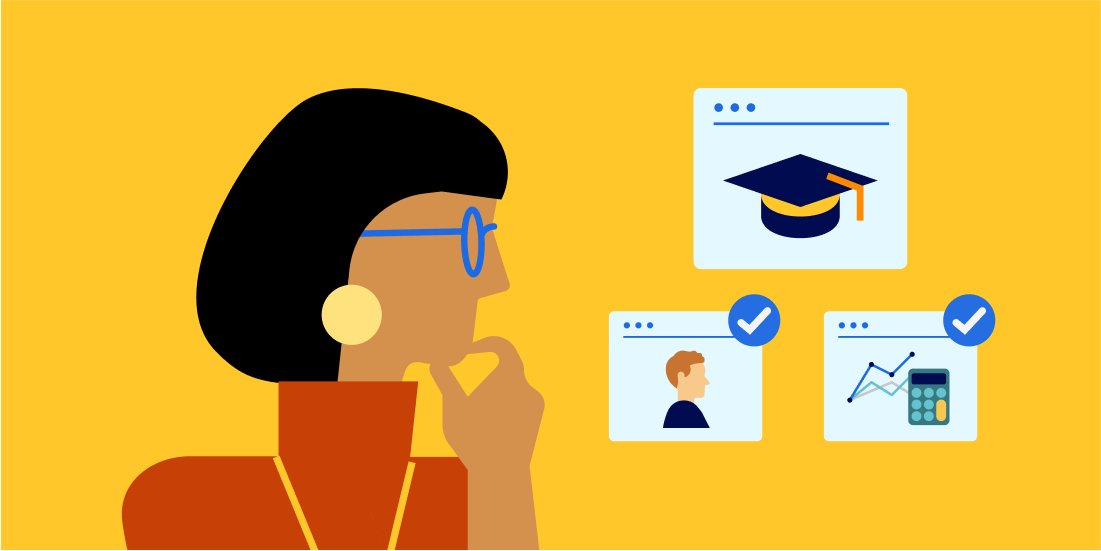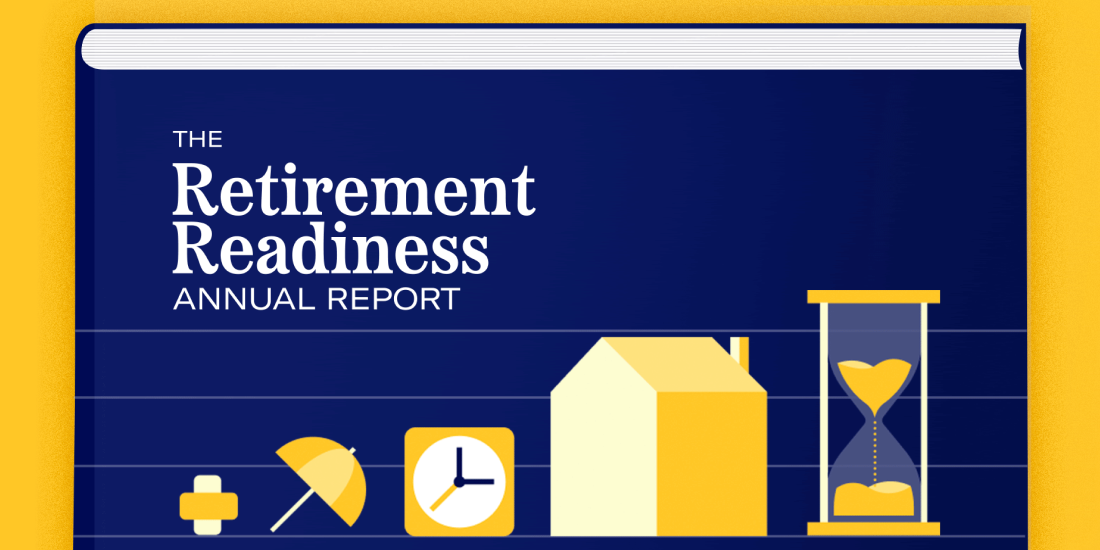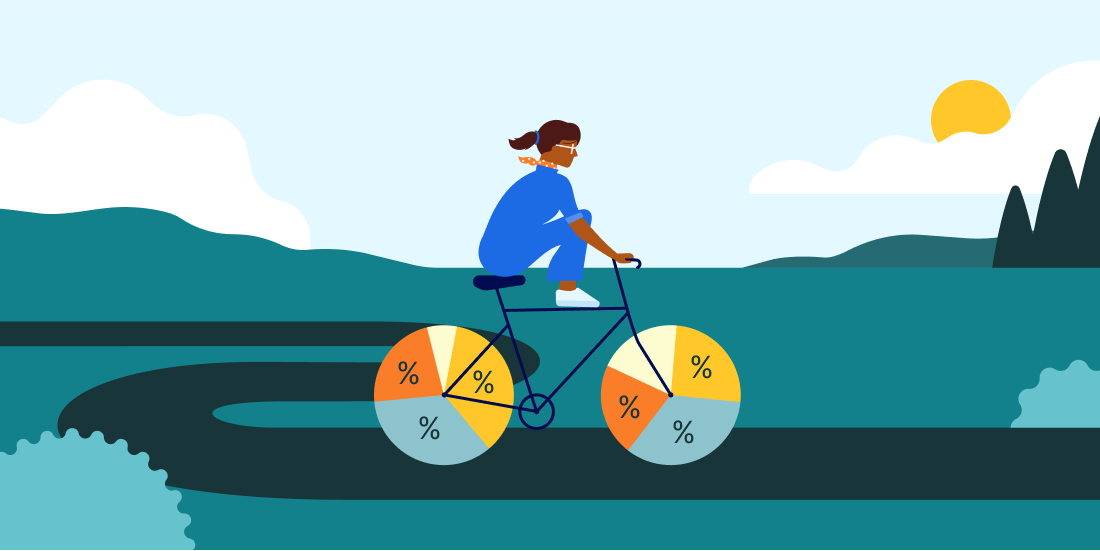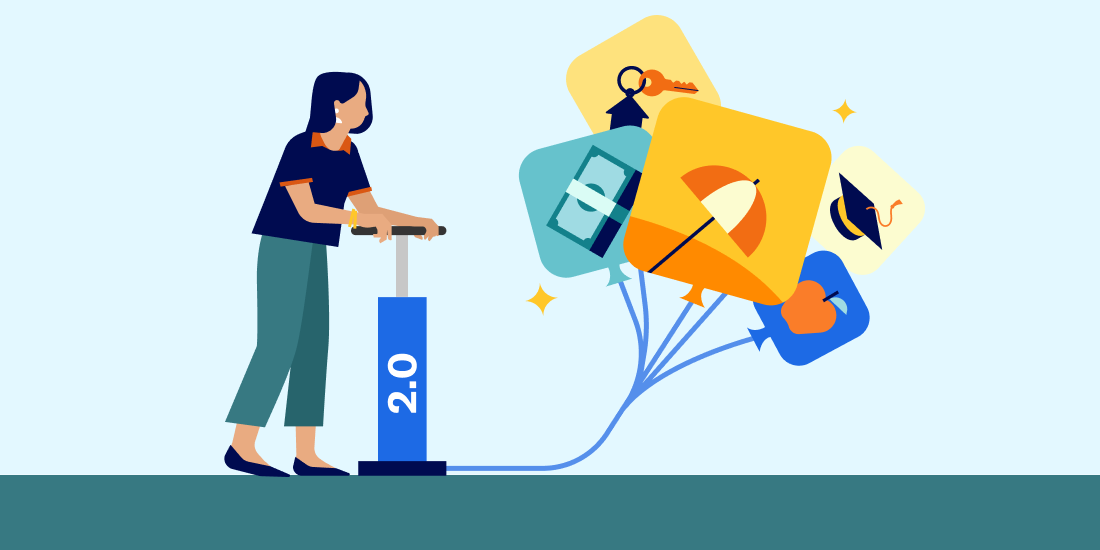Financial Benefits

Featured articles
-
![]()
At the top of HR lists in 2024: 401(k) match on student loan payments
With the SECURE 2.0 Act here, employers can offer a 401(k) match on student loan payments. And ...
At the top of HR lists in 2024: 401(k) match on student loan payments With the SECURE 2.0 Act here, employers can offer a 401(k) match on student loan payments. And the need may be larger than you think. “It’s at the top of our list.” That’s what Kraft-Heinz’s associate director of pensions said in an interview with Pensions&Investments. He was referring to a 401(k) match on student loan payments, one of the 90-plus provisions in the SECURE 2.0 Act. This optional provision allows for qualified student loan repayments to count as elective deferrals and qualify for 401(k) matching contributions from an employer. When an employer offers to match student loan contributions into a 401(k), employees can pay down their loans while also taking advantage of their 401(k) match. A proven benefit Prior to SECURE 2.0, 401(k) matching your employees’ student loan payments was not an option, but Abbot Laboratories saw a need (and an employee retention tool). In 2018, the IRS approved a request from Abbot to offer this new type of match. One year after launching the program, more than 1,000 Abbott employees had signed up, ranging in age from 20 to 60, proving there was demand for the benefit. Today, the provision in the SECURE 2.0 Act makes it possible for nearly all employers to offer a similar style benefit. Is the need greater than we think? It’s well known that Millennial and Gen-Z employees are often overburdened by student debt, but recent data shows that the need for a 401(k) match on student loan payments may be even greater than we think. A 2023 report by the National Institute on Retirement Security found that 13% of Gen-X employees (people born from 1965 to 1980) still have student loans, with an average balance of $40,000. The report went on to say, “...those Gen-Xers with student loan debt have lower net worths and are more likely to fall short of their retirement savings targets, at least in part due to student loan debt.” Knowing what your employees need As generations age, it will be important for each employer to understand the changing demographics, expectations, and needs of their employee base. If you are trying to attract a college-educated workforce, having relevant benefits in place will make hiring and retention more successful. Also, keeping track of the benefits offered by workforce competitors will allow for more strategic creation of benefits packages. Our solution for your need At Betterment at Work, our modern 401(k) platform helps streamline your administrative processes. We’ve designed offering a 401(k) match on student loan payments to be seamless and simple for you and your employees. Your employees simply record their qualified loan payments, and you can approve the match using an easy-to-use dashboard. -
![]()
The ROI potential of offering a 401(k) match on student loan payments
Over 20% of employees would consider leaving their jobs for a 401(k) match on their student ...
The ROI potential of offering a 401(k) match on student loan payments Over 20% of employees would consider leaving their jobs for a 401(k) match on their student loan payments. But can you afford to offer the benefit? In a 2022 Betterment survey of over 1,000 employees, we found that student loans are an important issue for many employees. 64% of employees said student loans have had an impact on their ability to save for retirement 21% of employees reported that a 401(k) match on student loan payments would entice them to leave their jobs. Generally, we believe that the more employees who participate in a 401(k) program, the less turnover a company will see. Data from payroll software provider Gusto backs up that belief. They report that employees with a 401(k) plan are 32% less likely to quit in any given month. We see a large opportunity for savvy employers to build stronger 401(k) programs to retain their employees. Adding benefits like a 401(k) match on student loan payments could be a difference maker. But how does an employer know if the costs of offering a 401(k) match on student loan payments is worth it? Let’s dive in and find out. First, some SECURE 2.0 fast facts Before we look at the potential ROI of this new match, let’s cover some fast facts about the provision included in the SECURE 2.0 Act. Effective date: January 1, 2024 401(k) student loan matching: Qualified student loan repayments could count as elective deferrals and qualify for 401(k) matching contributions from their employer. Employees who take advantage of this would be compliance tested separately. How it works: At a high level, there are three things to know. Employees are required to certify that they made loan payments. They do not have to show proof of payments if the employer doesn’t require it. An employer can rely on employee certification alone. Matching contributions must vest on the same schedule as salary deferral matching contributions. Employers can make matching contributions less frequently than salary matches, although contributions must be made at least once a year. Understanding the costs of a 401(k) match on student loan payments First, let's take a wider view of cost. Replacing a single employee may not directly show up on your company’s financial statements, but it's expensive, no matter the company, especially if it happens more than once. One report by SHRM cites employee replacement costs as being six to nine months of an employee’s salary. Another report by Gallup cites one-half to two times the employee's annual salary. Employee replacement costs to consider include: Hard costs: These are straightforward to quantify and include hiring costs like HR staff, technology, and job postings. Once an employee is hired there are also hard costs like onboarding training, new equipment, and processing paperwork. Soft costs: These can be murky to measure but impact every hiring decision. These include the time spent by employees who help with the hiring process, from interviews to position description reviews and onboarding planning. As a new employee joins the company, these costs continue with additional onboarding meetings and lowered productivity as the new team member gets up to speed. Now that you’ve considered the real costs of recruiting and onboarding a new employee (vs. retaining a good team member), we can talk about the cost of this new 401(k) match. Provision implementation costs may include: Participant Fee: If you are using a modern 401(k) tech platform, these costs are minimal often ranging from $5 to $10 per month. You can also consider passing these small costs on to the employee. Nondiscrimination testing: Depending on your 401(k) provider, an increase in participants may result in increases in fees for additional compliance testing. (Note: At Betterment at Work, there are zero additional compliance testing fees if your plan has an increase in participants.) Matching contribution costs: If more employees use the 401(k), contributions may increase, although some companies may have already budgeted for a portion of these in their overall 401(k) match budget. Administrative costs: Tracking self-certifications requires implementing a process. This can be reduced if your company leverages technology to streamline this workflow. There are costs to administering the 401(k) student loan match provision. But compared to losing a talented employee, provision costs may be far less. Think of the match benefit as an investment in talent. Calculating ROI of a 401(k) match on student loan payments It’s important to note that when calculating ROI for your company, you should take into consideration each employee’s unique value and the costs associated with replacing their role. To help illustrate, consider the following hypothetical example of an employee making $75,000 at a company offering a 6% 401(k) match. Estimated replacement costs: $37,500 to $150,000 one-time cost An employee making $75,000 could cost between $37,500 and $150,000 to replace using the benchmark of one-half to two times the employee's annual salary. Estimated 401(k) student loan match costs: $4,620 to $5,000 per year If that employee uses the 401(k) student loan matching program with a 6% match, the employer would pay $4,500 in matching contributions. We’ll add on $120 per year in estimated monthly participant plan fees plus potential administrative costs estimated at a few hundred dollars to process and test this employee’s student loan match. We see that with a full employer match plus administrative fees, we are still not even close to the costs associated with needing to replace the employee. It would take over seven years in 401(k) matching costs to reach the low-end cost of replacing the employee. That’s without considering the value a satisfied, tenured employee brings in workplace production, institutional knowledge, cultural contributions, and more. -
![]()
How to decide if you should offer a 401(k) match on student loan payments
SECURE 2.0 gives 401(k) plan sponsors the option to offer matching contributions on qualified ...
How to decide if you should offer a 401(k) match on student loan payments SECURE 2.0 gives 401(k) plan sponsors the option to offer matching contributions on qualified student loan payments. Our three-step process balances the needs of your people, your budget, and your operations to help you as you decide if offering a 401(k) match on student loan payments is right for your company. Step 1: Assess your people’s needs When thinking about your team, it’s important to consider your current employees and future hires. The workforce is evolving and the needs of your employees may evolve as you hire. Your current employee’s needs: You’ll want to review your workforce’s current participation in your 401(k) plan. If you see that enrollment and savings are high, you may not have a need. On the other hand, if you see larger portions of younger graduates not enrolled, student loan matching may be a good fit. If feasible, talk with your employees to better understand their needs. Remember, it’s not always younger employees who are paying student loans. (Tip: If you offer other student loan benefits, like direct reimbursements, look at who is using those benefits and whether or not those employees are also contributing to their 401(k). A 401(k) match on student loan payments may be a good fit if you see a savings problem.) Your future employee’s needs: Your workforce in a few years might look different than your workforce today. Consider the types of employees you want to attract over the coming years. For recent grads, especially when hiring for key roles, this new type of 401(k) match could be a differentiating factor when deciding where to accept a job. Knowing your employee’s needs is crucial to engagement and retention, but next, you’ll need to know how much that will cost. Step 2: Review your budget There are two cost aspects to consider when budgeting for offering a 401(k) match on student loan payments. Matching contributions: You’ll need to review the cost of matching contributions, considering employees whom you previously did not provide with matching contributions. Your goal is to calculate the incremental cost. You may already be budgeting for these potential contributions if you include them in your salary match budget. But it’s important to estimate the actual increase you could see year-over-year in matching contributions. Operational costs: Depending on your 401(k) provider, you may have technology-related costs, although they should be minimal in most cases. Also, consider “soft costs” like employee time used to manage operating processes. With the right technology, these operational costs can be relatively low. The goal of reviewing your budget is to walk away with a confident estimate of the total annual costs of offering the benefit. Knowing that, you can decide whether the cost makes sense. Ultimately, understanding the ROI of the decision is fundamental for your business. That’s why we recommend taking it a step further and calculating the ROI of offering a 401(k) match on student loan payments. Step 3: Understand your operational needs Anything new in business usually comes with process changes. And that’s true if you adopt a 401(k) match on student loan payments. When analyzing how to efficiently manage this new plan feature, consider the following: Automation via technology: Work with your plan’s tech platform to understand their capabilities. Ideally, most of the process will be streamlined for you and your employees. Human intervention: There will most likely be some manual intervention, such as approving qualified student loan payments in order to process the matching contributions. Understanding who on your team will complete these tasks can help create an efficient process and avoid operational issues post-implementation. We recommend mapping out a process as you initially launch a 401(k) match on student loan payments. You’ll be able to train your staff, explain the feature to employees, and make adjustments as needed.
All Financial Benefits articles
-
![]()
The key factors holding back your employees’ retirement readiness
The key factors holding back your employees’ retirement readiness And how the types of benefits you offer can help. Broadly speaking, the economy did alright in 2023. Inflation slowed, stocks rallied, and employment remained strong. But you wouldn’t know it by looking at the current mood of American workers. According to our latest annual survey of 1,000 full-time employees, their levels of financial wellness trended down in 2023 at the same time their financial anxiety climbed by seven percentage points. So what gives? We sifted through the data and saw several trendlines emerge. Explore them in full detail in our Retirement Readiness annual report – and keep reading below for a preview. Inflation’s ripple effect on retirement Inflation slowed significantly in 2023, but that’s not to say that all prices fell. The average American household spent $709 more per month in 2023 compared to 2021 on things like rent, groceries, and gas. Until wage growth catches back up to inflation, workers will continue to feel their paychecks pinched, and two casualties are taking shape as a result: Emergency funds: Although more than half (52%) of employees reported currently having an emergency fund, that’s a 7% drop from 2022, and 14% decrease from 2021. Retirement savings: A worrisome 3 in 10 workers tapped into retirement savings in the past year to pay for short-term expenses, a significant setback for their long-term goals. All of this has left workers feeling stressed. More than half (58%) went so far as to say the anxiety makes it hard for them to focus at work. But our research shows that some employer support and benefits can go a long way toward calming the waters. The growing role of financial benefits in retention If short-term expenses are depleting workers’ savings, it’s no surprise that a strong 401(k) and financial wellness benefits program remains at the top of workers’ wish lists. The importance of these benefits continues to grow as well, with 70% of workers saying financial wellness benefits are more important now than a year ago. A growing percentage of workers (60%) even say they’d be enticed to leave their job for better financial benefits. Student loan debt, however, continues to prevent the adoption of financial benefits for many. 64% of workers said student loan debt impacts their ability to save for retirement, and when asked why they don’t take advantage of their employer’s benefits, by far the most common reason was their paycheck simply won’t stretch that far. On this front, good news is just around the corner. Thanks to the SECURE 2.0 Act, employers will soon be able to offer a 401(k) match on their employees’ qualifying student loan payments, helping workers tackle two goals at once. -
![]()
How your 401(k) plan can help boost employee financial wellness (and productivity)
How your 401(k) plan can help boost employee financial wellness (and productivity) Financial stress is hurting productivity. Here’s how you can help change that at your business starting with your 401(k). Not only does financial stress make an individual’s personal life more difficult, it can hurt their employer's bottom line. As business leaders, we are in a position to make a positive impact on our employees’ lives and our business performance. Three different studies, one diagnosis Three national studies, including our own, found that financial stress negatively impacts work performance. PwC found that 60% of full-time employees are stressed about their finances and one in three full-time employees says that money worries have negatively impacted their productivity at work. Morgan Stanley found that 66% of employees agree that financial stress is negatively affecting their work and personal life. Our own study at Betterment at Work found that 46% of workers said that financial anxiety impacts their ability to work all or most of the time. The problem is clear but what do we do about it? The right benefits can help ease the pain When asked to rank potential financial wellness benefits that an employer could offer, employees ranked a 401(k) plan first followed by 401(k) matching contributions. These are some of the additional findings in our 2022 Betterment at Work Financial Wellness Barometer survey. If you offer a 401(k), it may be your core financial benefit but it isn’t the sole remedy. Our study also found that 93% of employees said it was at least somewhat important that their employer provides financial wellness benefits. Also, the demand for these benefits is increasing, with 68% saying financial wellness benefits are more important to them now than they were a year ago. It’s important to look at how you can build financial wellness features around your 401(k) plan to support your employees’ financial lives—and your business’s future. A comprehensive approach to wellness that starts with your 401(k) Knowing the needs of a modern workforce, at Betterment at Work, we’ve built a suite of financial benefits designed to support your employees, starting with your 401(k) plan. We believe that evolving your benefits with the needs of your workforce can help provide a strategic advantage in attracting and retaining talent. At our core is our modern 401(k) platform: Your 401(k) plan should be easy to manage for you and easy to use for your employees. Our technology streamlines this, whether via integrations with common payroll providers or through our intuitive platform that helps employees invest in diversified portfolios of generally low-cost ETFs. Enhancing your 401(k) plan: We’ve built additional benefits that integrate with our 401(k) platform to make managing benefits easier and reduce the financial stress that your employees carry. 529 Education Savings: Including 529s in your benefits package helps employees tackle rising education costs and shows your commitment to their financial health. It’s easy to manage, with 529s integrating into your existing benefits platform for a seamless experience. Financial Coaching: Help employees take better control of their finances with tailored 1:1 guidance and advice. Adding Financial Coaching to your Betterment 401(k) can help build a more confident, productive team. Plus, as a fiduciary, every financial advisor at Betterment is legally responsible to act in your employees' best interest. -
![]()
How to use SECURE 2.0 to enhance your total rewards program
How to use SECURE 2.0 to enhance your total rewards program Learn how the SECURE 2.0 Act can have a positive impact on your total rewards program. Plus, follow our checklist for a smooth implementation. Leading HR teams take a strategic approach to ensuring their employees see and feel the value of their total rewards programs. In a competitive business environment, total rewards—the monetary and non-monetary benefits you offer—can be the difference maker for attracting and retaining top talent. Optimize how you promote your total rewards program The SECURE 2.0 Act gives employers an opportunity to create even stronger 401(k) and retirement benefit offerings. Some employers may hesitate at the opportunity, fearing operational demands or added costs. But strategic leaders can capitalize on the new law. We encourage companies to view SECURE 2.0 as a chance to implement new, modern 401(k) features and to highlight the value of their 401(k) benefit as part of their total rewards program. Benefits that make a difference Although many SECURE 2.0 provisions are mandatory, the Act gives employers some implementation flexibility along with some optional provisions. Review provisions to see how they could be leveraged to increase the value of your 401(k) program. A sample of the provisions that you may find add value to your total rewards program include: 401(k) match on student loan payments (Optional): Consider your current and ideal future employees. If it’s common for them to have student loan debt, this provision can help them kickstart their retirement savings when they otherwise may not have been able to save. Automatic enrollment (Required for plans established after 12/29/22): Data has shown that 401(k) participation—and employee savings—dramatically increases when you automatically enroll employees, rather than requiring them to opt in. Plus, because automatic enrollment makes opening a 401(k) the default, the enrollment process can be streamlined for all eligible employees. Automatic escalation (Required for plans established after 12/29/22): Adding to automatic enrollment is the automatic escalation provision, requiring employers to increase employee contributions by 1% per year to at least 10% (but no more than 15%). This escalation will help employees get closer to the 10% to 15% mark that many financial experts recommend as the desired retirement savings rate. Your company can use this mandatory provision as an opportunity to provide financial education to employees around adequate retirement savings. Long-term, part-time employee eligibility (Required): This is a mandatory provision that could have a large impact depending on your employee base. If you find that you have a large portion of employees that fit into this group, you can clearly communicate the benefit these employees will receive. Communication is the key to success Communication drives the success of the 401(k) plan changes you make due to SECURE 2.0. It’s a big opportunity to engage with your employees. Rather than simply rolling out operational changes and sending mandatory paperwork to employees, take the time to explain how these changes are designed to help employees and their families. Think of this not as an operational change to your 401(k), but rather as a strategic change to your total rewards program. Pro tip: As you implement provisions from the SECURE 2.0 Act, it’s also an opportunity for you to re-educate your workforce on all benefits you provide. Take the time to develop an internal communications plan for your total rewards program. Think holistically and show employees the total value of their benefits and compensation. Checklist: Leveraging SECURE 2.0 in your total rewards program As you implement SECURE 2.0 provisions, build out a checklist to make sure you consider all relevant details. Here’s a list to get you started. Talk with your 401(k) plan provider: Understand how they are operationalizing each provision and what that means for your processes. Determine which optional provisions you will implement: Research each provision, consider surveying employees to measure demand, and conduct a budget analysis. Determine how you will implement mandatory provisions: Work with your management team to decide how to implement mandatory provisions such as automatic enrollment and escalation. Provide pre-launch communication to employees: Explain that positive changes are coming and what to expect. Distribute launch communication to employees: Hold meetings and distribute materials explaining new benefits including their value, timing of changes, and how to access benefits. Consider using a formal “total rewards statement” to show the value to employees. Communicate to prospective employees: Update total rewards listings on your website, job descriptions, and other public-facing locations to attract your ideal employees. Measure adoption and value: Working with your 401(k) provider, measure the adoption of your 401(k) features and use the data to communicate value to stakeholders including employees, management, and your board of directors. For a full overview of what to consider when building out a 401(k) plan, check out our Plan Design article. Our modern 401(k) platform meets your modern total rewards program At Betterment at Work, we’ve built a modern 401(k) platform with an all-in-one admin dashboard and payroll integrations to save time managing your plan. Not only are we a leading provider of modern financial benefits, but our team of experts is by your side providing topical educational content. We also help you take your 401(k) plan a step further with financial wellness features. Support your employees with 1:1 Financial Coaching, 529 Plans, and our Student Loan Management platform, including the option to easily provide your employees 401(k) matches on qualified student loan payments. -
![]()
Does your current 401(k) plan help you leverage the SECURE 2.0 Act?
Does your current 401(k) plan help you leverage the SECURE 2.0 Act? Learn the two strategic areas that can give your 401(k) a competitive advantage as you navigate SECURE 2.0. Plus, get resources to help you along the way. With over 90 provisions, the SECURE 2.0 Act has created one of the largest opportunities in history for employers to support their employee’s financial wellness. But the Act is complex and it’s a lot to manage. This article covers what you should expect from your 401(k) partner as you navigate the Act, along with how to help your internal leadership team understand the Act’s implications. With a carefully planned strategy, you can get the most out of SECURE 2.0. Your opportunity: Leveraging the SECURE 2.0 Act The Act positions savvy HR and business leaders to create highly attractive 401(k) programs. Based on our research, 51% of employees would consider leaving their job for a 401(k), and if you add on employer matching contributions, the figure jumps to 57%. Some of the major SECURE 2.0 provisions that your 401(k) program needs to consider include: Optional 401(k) match on student loan payments Required auto-enrollment and auto-escalation Period of service requirements for long-term, part-time workers reduced to two years But how do you go about making the most of these provisions, with the goal of increasing the ROI on your 401(k) plan? Beyond understanding the provisions, we recommend focusing on two strategic areas to help give you and your executive team a competitive advantage: Technology Insights Here’s what you need to know to get the most from your 401(k) plan. While the information provided about SECURE 2.0 is accurate based on Betterment’s current understanding and analysis, the details described in Betterment’s content are subject to change based on additional regulatory guidance. Betterment content should not be considered legal or tax advice. Technology = Automation + Integration With SECURE 2.0, now is a good time to review if your 401(k) technology, including your recordkeeper and internal processes, are equipped to help you implement the new provisions. The Act is designed to help people save for retirement, but if your 401(k) platform isn’t built on modern technology, you may struggle to incorporate the provisions efficiently. You could be stuck with hours of costly manual work. Your 401(k) technology partner should be able to: Automate: You shouldn’t be manually updating tasks like auto-enroll and auto-escalation. If you choose to offer matching contributions on student loan payments, make sure your platform has the technology to process those transactions, as well. Integrate: Data management is only becoming more important in implementing the new provisions. You’ll want to make sure you have integrations with your payroll provider that allow you to move the right data between systems. See if you can integrate data like hours worked to allow for easier implementation of provisions like plan participation by long-term, part-time workers. Also, as provisions like the mandatory Roth catch-up contribution (which has been delayed until 2026) go live, your 401(k) platform should facilitate processing the right data to help stay in compliance and reduce manual work. Insights = Facts + Guidance SECURE 2.0 leaves you facing a myriad of information, and you need expert insights. It’s not enough to simply know the facts. You—and your internal stakeholders—need the right insights to make decisions that will help retain employees and generate a positive ROI for your business. Your 401(k) partner should be providing you with: Updates on SECURE 2.0 facts: The SECURE 2.0 provisions are important to understand so you know how your plan will be impacted—especially as they evolve with guidance from the government. Guidance beyond the facts: To create value with your 401(k), your plan partner should help you think through which optional provisions make sense to implement and how to get the most out of implementing mandatory provisions. For example, how to determine if 401(k) matching contributions on student loan payments are right for your business or how to set your auto-enrollment and auto-escalation levels. Just as important, look for a partner who can help you plan and send communications to your employees so they understand how they can get the most out of your plan. Setting your leadership team up for SECURE 2.0 success As you analyze your current 401(k) plan and its abilities to leverage the SECURE 2.0 Act, be sure to consider the perspectives of your organization’s leadership team or 401(k) committee. They will most likely want to understand how your current plan provider will help implement plan changes. Be prepared to answer the following questions for each leadership role. This is not an exhaustive list of questions, and roles may be slightly different at your company, but it should help you get into the mindset of each stakeholder. CEO / Board of Directors: What are the overall costs and/or ROI of implementing SECURE 2.0 provisions? What is the implementation plan to successfully roll out the changes? Is the 401(k) plan competitive within the industry? Chief Financial Officer / Chief Operating Officer: How will adopting SECURE 2.0 provisions impact plan administration efficiency and cost? Who is responsible for administering provisions and processes? Chief Risk / Compliance Officer: Are provision implementation deadlines being met? How does adopting these provisions impact 401(k) nondiscrimination testing? Are policies, procedures, and plan amendments being updated as needed? Chief Human Resources Officer: What is the best employee communications approach to implementing SECURE 2.0 provisions? Are current HR vendor integrations, like payroll, sufficient to implement SECURE 2.0 efficiently? Do the provisions have implications on the 401(k) plan’s role within the organization’s total rewards program? Your 401(k) plan provider should be a resource to help answer these questions as you implement SECURE 2.0 provisions. We have resources to help you leverage SECURE 2.0 Our tech is built so you can run a modern 401(k) program. Our platform helps streamline processes like: Automation: Enabling auto-enrollment and auto-escalation customized to your plan. Student Loan Management: A platform for you and your employees, including the ability to process 401(k) matches to student loan payments. Payroll Integrations: Integrating with payroll and benefits providers to make sure your data gets where it needs to go, to help reduce manual processes as you implement SECURE 2.0. Our 401(k) content provides insights to help you leverage SECURE 2.0. Our team of experts has created resources to help you increase the ROI on your 401(k) program. Free Email Course: We offer a free, six-month email series called “Beyond the Facts: SECURE 2.0” that guides you through some of the most important SECURE 2.0 decisions business leaders need to make, from implementing provisions to communicating with your employees. SECURE 2.0 Resource Site: Plus, we have a content library designed to brief you on the most important aspects of SECURE 2.0 so you can stay in the know and build a 401(k) that fits into your total rewards program. -
![]()
Why Adding 529s to Your Financial Benefits Can Appeal to Working Parents
Why Adding 529s to Your Financial Benefits Can Appeal to Working Parents 529s can help your employees maximize money put aside for education Offering a better benefits package starts with a simple idea: your employees have diverse and ever-changing needs: Retirement may be their end goal, but there may be more pressing needs. Some of your staff might be striving to pay off their student loans. Others may need help saving for education. With Betterment at Work, it’s possible to help them with all three goals in one place. Let's take a closer look at 529 plans, an appealing benefit for working parents that helps them maximize money set aside for educational expenses. 529s help combat the steep cost of college The average cost of 4-year college tuition and fees has more than tripled since 1980. So it’s no wonder paying for kids’ education is a top concern among parents. 529s are special investing accounts that can help, and they’re growing in popularity. The number of 529s opened has increased by 55% since 2009. Funds in a 529 both grow and can be used tax-free for qualified expenses—things like tuition and fees, books and supplies, and even some room and board. You can even use them for up to $10,000 per year in K-12 tuition in all but a few states. Other benefits include a high balance limit—between $235,000 and $550,000 depending on the state—and low-maintenance investment options that automatically adjust risk as the beneficiary nears college age. Betterment at Work streamlines the 529 experience By offering your employees access to 529s through Betterment at Work, you add a unique benefit without adding another benefits provider. Manage your 529 offering right alongside your 401(k) and you can even offer an employer match, just like a 401(k). Just as importantly, your employees get a simple way to sign up for this savings tool. 529s can be a pain to shop for on your own, with nearly every state offering a plan open to anyone. The quality of those plans—everything from investment options and fees to website interfaces—can vary widely. Betterment at Work simplifies things. Employees can compare and select plans all within the Betterment app, and with integrated plans, they can automatically fund their 529 through payroll deductions. They can also see their 529 savings right alongside their 401(k) and connected student loans. 529s are available through our Pro and Flagship plans. Learn more or get started today. -
![]()
Add a Friendly Face to Your Employees’ 401(k)s
Add a Friendly Face to Your Employees’ 401(k)s Why some of your 401(k) plan’s participants may need a little extra advice—and how to give it to them. Before our arrival more than a decade ago, the finance world typically worked one way for everyday investors: you had a “guy.” In rare cases—much too rare—it was a “gal,” but that’s a story for another day. This advisor may or may not have been a fiduciary, meaning someone legally obligated to act in your best interest. But if you wanted to invest, you had to go through them. And they likely charged a hefty sum for their services, given that today’s average fees for a traditional financial advisor are still more expensive than alternatives like Betterment. Something about this dynamic didn’t sit well with us, so we flipped the relationship on its head. We put our team of experts to work behind the scenes. Traders and tax experts, behavioral scientists and “quants,” they all worked together to infuse technology with their investing insights, leading to a piece of software that served up personalized advice and automated features at scale and for a fraction of the cost of what most investment firms charged. While plenty of investors—800,000 and counting—utilize our approach to automated investing, some still prefer to add a human advisor to that experience, someone to coach them through their money moves face-to-face. And you know what? We not only think that arrangement is okay, it sums up our investing philosophy well: automate what you can, and leave the rest to humans. The implications for your company’s 401(k) plan All of the above holds true for your employees and their 401(k)s. You can give them an intuitive platform to automate their retirement savings. You can match a percentage of their contributions as an incentive. You can share a robust library of educational resources to help explain investing. Some will thrive in this scenario, some will struggle, and some may not bother to sign up at all. So what are you, the plan sponsor, to do? Well, you can add Financial Coaching to your Betterment at Work 401(k), giving your employees access to professional financial advice from our team of advisors. These experts—all fiduciaries, by the way—add a warm touch to the cold arithmetic of retirement saving. They can help your employees not only maximize their 401(k)s, but sort through the rest of their financial lives. “You know, the biggest emotion I sense from clients after a session isn’t excitement; it’s a sense of relief,” says Corbin Blackwell, one of our advisors. “They’re smart people, but investing is scary. Sometimes you just need reassurance that you’re on the right track.” Or sometimes, your employees really do have unusual life circumstances that make for complicated financial decisions. The sort of scenarios that aren’t easy to automate. Maybe they’re high earners, for example, trying to weigh the pros and cons of a Roth IRA conversion. In any case, it’s helpful to have an advisor like Corbin available to talk with. Giving your employees this premium resource can help boost your plan’s participation rate and may improve their financial wellbeing. It can also elevate your 401(k) above your competitors. Retirement saving’s role in the recruiting arms race So far we’ve focused on the benefits of Financial Coaching to your existing employees. We haven’t touched on the appeal to prospective employees, the people you’re hoping fill your talent pipeline for years to come. To some of these workers, a 401(k) is an expectation and neither a surprise nor a delight. They’ve seen plenty of cookie cutter retirement benefits in past jobs and none stood out, at least for the right reasons. While some companies consider this business as usual, another box to check in their benefits package, others see an advantage just waiting to be taken. Because let’s be real, what actually stands out: a piece of paper in your benefits packet, or real-time access to an expert like Corbin? Don’t take our word for it, listen to the recruits. We surveyed workers—and 1-in-5 said access to a live financial advisor could entice them to leave their current job. Whether you’re already a Betterment at Work customer or considering becoming one, Financial Coaching carries the potential to differentiate not only your 401(k) plan but your company. It’s a straightforward way to show you care about the financial well-being of recruits and current employees alike. -
![]()
Your Employees Can’t Focus — and Money Worries Might be Why
Your Employees Can’t Focus — and Money Worries Might be Why Financial anxiety is impacting workers’ ability to do their jobs. Here’s how the benefits you offer can do something about it. From stock market whiplash to escalating inflation, the past year provided plenty for your workers to worry about with respect to their finances. And while you might think they can keep calm and carry on, new research by Betterment at Work is showing these worries are impacting their productivity. More than half (54%) of the 1,000 full-time U.S. employees surveyed in our latest Financial Wellness Barometer say financial anxiety makes it difficult for them to focus at work. So what’s an employer to do beyond increasing base pay? You’d be surprised how much benefits can help. In addition to offering a barometer of workers’ overall financial wellness and the unique struggles they face, our annual survey zeroes in on the benefits employees value most. Our survey found that while turnover has cooled since a year ago, it’s still well above average, showing the Great Reshuffle is far from over. More than half (54%) of workers surveyed would be enticed to change jobs for better benefits. Which benefits exactly? A 401(k) is mentioned most often among desirable financial wellness benefits, but it’s not the stopping point. Hot on its heels are two other benefits, with each one illustrated by a troubling trend. Breaking the retirement bank, in case of emergency An alarming number of surveyed workers (more than one-in-four) tapped into their retirement accounts to pay for short-term expenses. This behavior not only has big implications for their retirement goals, but can quickly become a bad habit. Instead of getting a high yield on cash set aside for short-term expenses, like the variable 4.00%* offered in a Betterment Cash Reserve account, savers who dip into their retirement accounts early are, with few exceptions, slapped with a 10% penalty by the IRS. All of this points to a notable lack of emergency funds—and explains why an employer-sponsored emergency fund is the second-most desired benefit beyond a 401(k). These funds act similar to a 401(k), with contributions automatically coming from a worker’s paycheck, albeit without the tax benefits of a retirement account. At a minimum, employers can help educate their workers on emergency funds and how to build them. Feeling the squeeze from student loans Nearly half of Millennial and Gen Z workers surveyed currently hold student loan debt — and a lot of it. Among all workers surveyed who hold this type of debt, the majority (59%) owe at least $10,000. Payments on federal student loans may still be paused through at least the first half of 2023, but the previously-announced $10,000 of debt relief on said federal loans is now in limbo. And with this much student debt saddling Americans, saving for retirement will likely continue taking a back seat to paying down student loans. This also shows why greater employer support would be welcome in this space. That support can take the form of 401(k) add-ons like our Student Loan Management. -
![]()
Helping Employees Set Up an Emergency Fund
Helping Employees Set Up an Emergency Fund Employers are looking for ways to help their employees save for unexpected financial emergencies. Betterment’s 401(k) platform can help. Your water heater fails. Your car breaks down on the side of the road. Your spouse loses their job because of a global pandemic. Life is filled with challenges, and some are more stressful and expensive than others. As a business owner, you’ve likely witnessed firsthand how financial emergencies can impact your employees. Not only does the stress affect employees’ personal lives, it can also affect their work performance, attendance, and focus. That’s why an emergency fund —with enough money to cover at least a few months of expenses—is such an important part of your employees’ overall financial plan. However, many people lack this critical safety net. Rainy day funds are running dry According to research by the Federal Reserve and reported on by the Employee Benefit Research Institute (EBRI), less than 25% of working families had liquid savings of more than three months of their family income. And even when asked if they have 75% of funds needed for three months, that jumps to just over one quarter. When faced with an emergency, employees without an emergency fund may turn to credit cards, take a payday loan, or even raid their retirement savings—triggering early withdrawal penalties and derailing their retirement savings progress. Having a solid emergency fund may help prevent employees from spiraling into a difficult financial predicament with wide-reaching implications. Emergency fund 101 So, what should your employees consider when setting up an emergency fund? At Betterment, we recommend: Saving at least three to four months of expenses—If employees have an emergency fund, they’ll feel more confident focusing on other important goals like retirement or home ownership. Investing emergency fund money—By investing their money—not socking it away in a low-interest savings account—employees don’t run the risk of losing buying power over time because of inflation. Making it automatic—Setting up a regular, automatic deposit can help employees stick to their savings plan because it reduces the effort required to set aside money in the first place. All of this is summarized for employees here: How to Build an Emergency Fund. Helping employees save for today—and someday Some employees may feel like they have to choose between building their emergency fund and saving in their workplace retirement plan. But it doesn’t have to be a choice. With the right 401(k) plan provider, your employees can save for retirement and build an emergency fund at the same time. For example, the Betterment platform is more than just a 401(k) in that it provides: Quick and easy emergency saving fund set-up Betterment makes it easy to establish an emergency savings fund—helping ensure employees don’t need to dip into their 401(k) when faced with unexpected financial difficulties. If your employees aren’t sure how much to save, Betterment can calculate it for them using their gross income, zip code, and research from the American Economic Association and the National Bureau of Economic Research.Betterment will also estimate how much employees need to save to build the emergency fund they want to reach their target amount in their desired time horizon. Using our goals forecaster, employees can model how much they need to save each month to reach their emergency fund goal and view different what-if scenarios that take into account monthly savings, time horizons, and target amounts. Linked accounts for big picture planning Our easy-to-use online platform links employee savings accounts, outside investments, IRAs—even spousal/partner assets—to create a real-time snapshot of their finances, making it easy for them to see the big picture. That means that in a single, holistic view, employees can track both their 401(k) plan account and their emergency fund. Personalized advice to help employees save for today (and someday) By offering personalized advice, Betterment can help your employees make strides toward their long- and short-term financial goals. Ready for a better way to help your employees prepare for the inevitable—and the unexpected? Talk to Betterment today.

